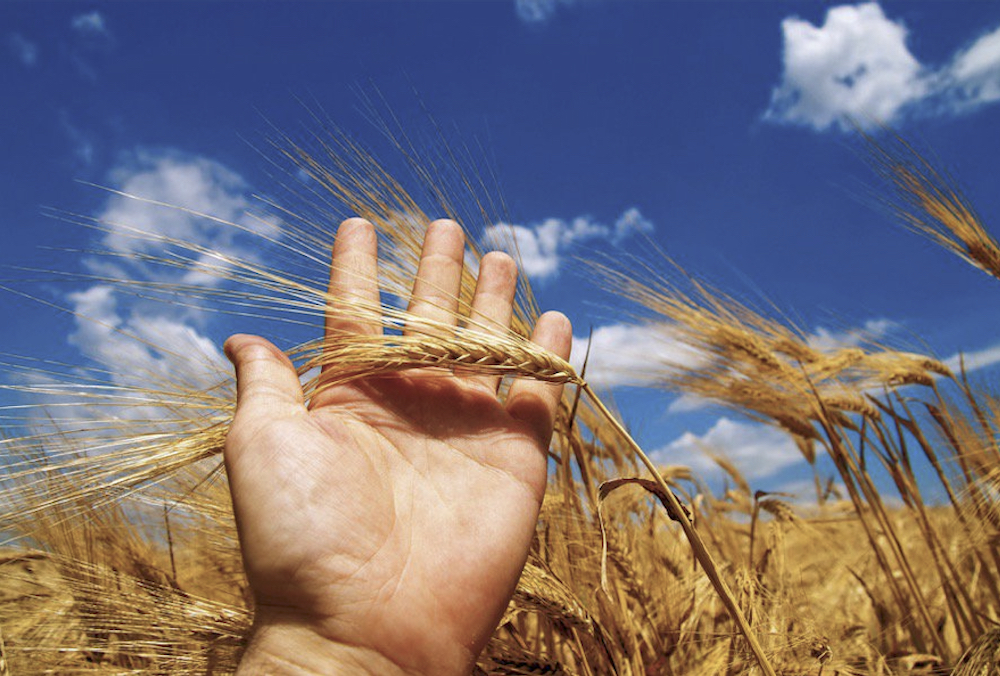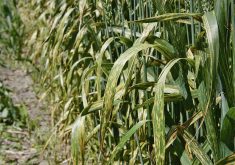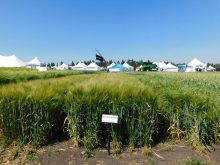Want to stop growing malt barley like it’s 1999? Alberta Barley is here to help.
The new ‘Better Malt, Better Barley’ online interactive map allows users to see how a number of both old and new malt barley varieties fare in different parts of the province.
“A long-standing issue in the Canadian malt industry has been the acceptance of new varieties that represent improvements in agronomics and disease resistance,” said Sheri Strydhorst, regional variety trial coordinator with Alberta Wheat and Barley.
Read Also

Grazing ‘sweet spot’ boosts pasture performance
Timing-focused approach to pasture management touted to boost forage growth, livestock gains while also cutting farmer labour and inputs
“To promote new varieties to growers and malt buyers, the Canadian Malt Barley Technical Centre has malt barley variety trials grown throughout Alberta, Saskatchewan and Manitoba. The interactive map allows farmers and malt buyers to access photos, videos and malt barley quality information from various field trial sites.”
Those locations are Westlock, St. Albert, Castor, Neapolis, Hanna and Lethbridge. By clicking on the map at maltbarleyvarieties.ca, you will be presented with a selection of 10 or 11 varieties. Selecting a variety, brings up videos, photos, plots, seed data plus a slide providing info on (among other things) overall yield, height, lodging resistance, maturity rating days, susceptibility and resistance to common barley diseases based on results from the region.

Much of the data is similar to what producers would find in the Alberta Seed Guide, except its interactive.
The idea for the website came out of brainstorming sessions, said Megan Evans, communications and events manager with the cereal commissions.
“Since many farmers like using the tried-and-true varieties they know yield high in their soil zone and climate, we wanted to highlight the (malt barley centre’s) regional variety trials grown all over the province,” she said.
“The easiest way to deliver seed guide information, malt quality data, images and video was using an interactive map to help farmers pick information closest to their farm gate. In essence, we wanted farmers to have agronomic information at their fingertips that pertained to their area and micro-climate.”
There were plans to conduct trials in Falher and Fort Vermillion but crop conditions in 2022 were not ideal for achieving a representative sample.
“There is currently work being done in the Peace region, but the past two years the crop has not been good enough, due to drought conditions, for a viable sample for malting barley to meet the quality requirements,” said Evans.
“The plan is to see if there is uptake from the tool and evaluate if it is something we want to add more data to.”
Adoption of newer, hardier varieties has long been a tough sell in the malt barley sector.
Not only do farmers tend to prefer older varieties such as AC Metcalfe (registered in 1997) and CDC Copeland (registered in 1999), but maltsters tend to do so as well. And if maltsters dismiss a certain variety, the grower has to sell it as feed.

“We are trying to get maltsters to accept new malt barley varieties and we are also trying to get farmers to move away from the conventional malt varieties they have been growing for years,” said Evans. “Many of the new-to-the-commercial-market malt varieties have great yield, a robust disease package and superior malt quality.”
However, the interactive map is just a starting point, said Strydhorst.
“Growers should check out their Alberta Seed Guide and talk to local seed growers to understand how varieties are performing in their area and understand that local adaptability,” she said.
And always check to see if maltsters will accept a new variety before diving in head first.
“I want to caution growers that they should have a contract in place if they want to grow one of these new malt barley varieties for the malt market. We want to make sure everyone’s making informed decisions.”
That’s absolutely critical, added Matt Sawyer, who farms near Acme and has changed his varieties a couple of times over the past few years. (He’s planting CDC Fraser this year.)
“If you’re going to change variety, first you have to ask where’s your end market and do they want it or not,” said Sawyer. “If there isn’t some fairly decent demand for it then it’s awfully tough to move it.
“If the maltsters are looking for that certain variety then there’s a little bit more incentive to take it.”
















